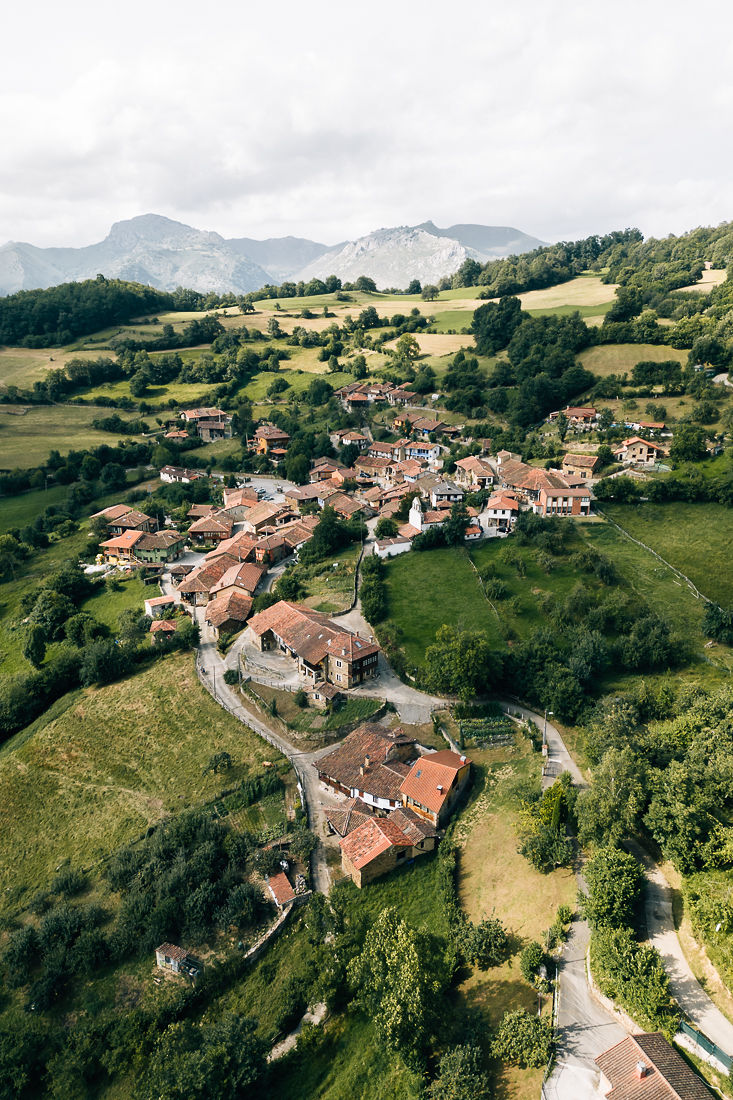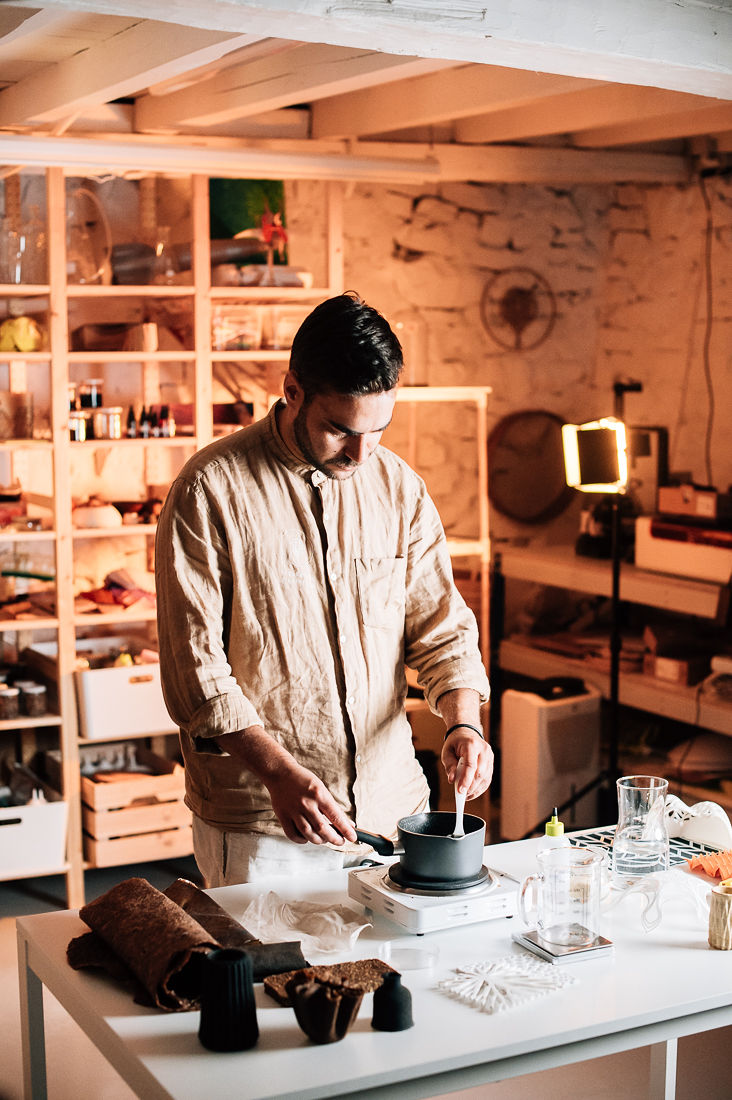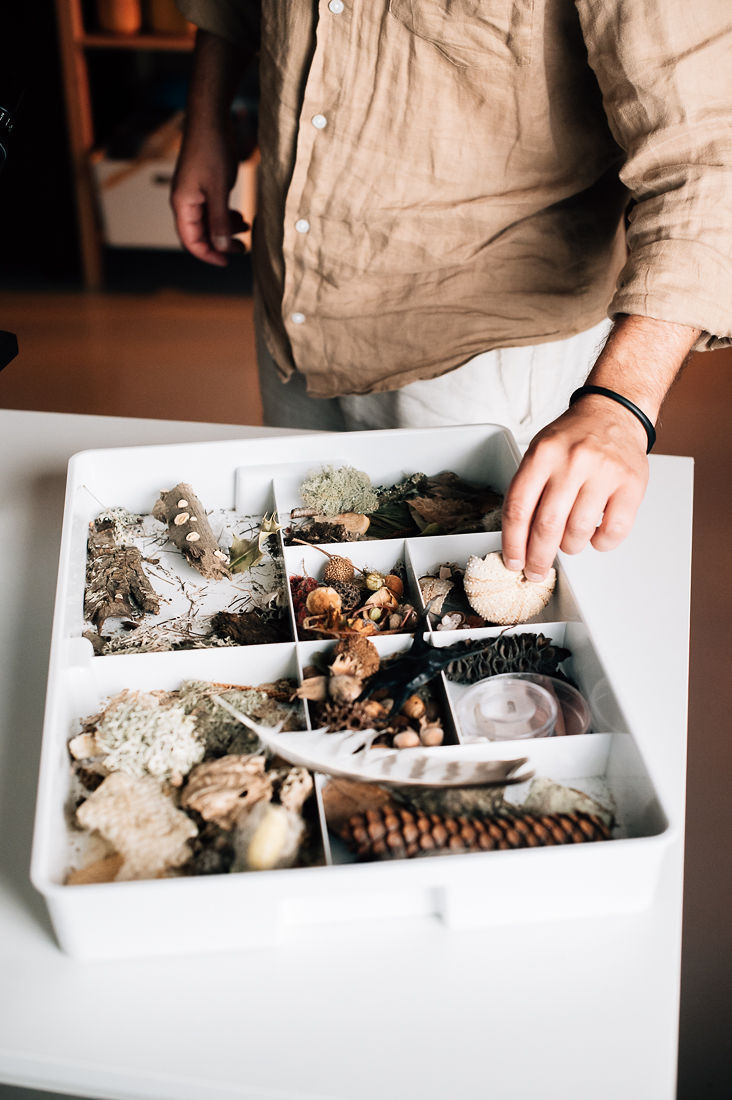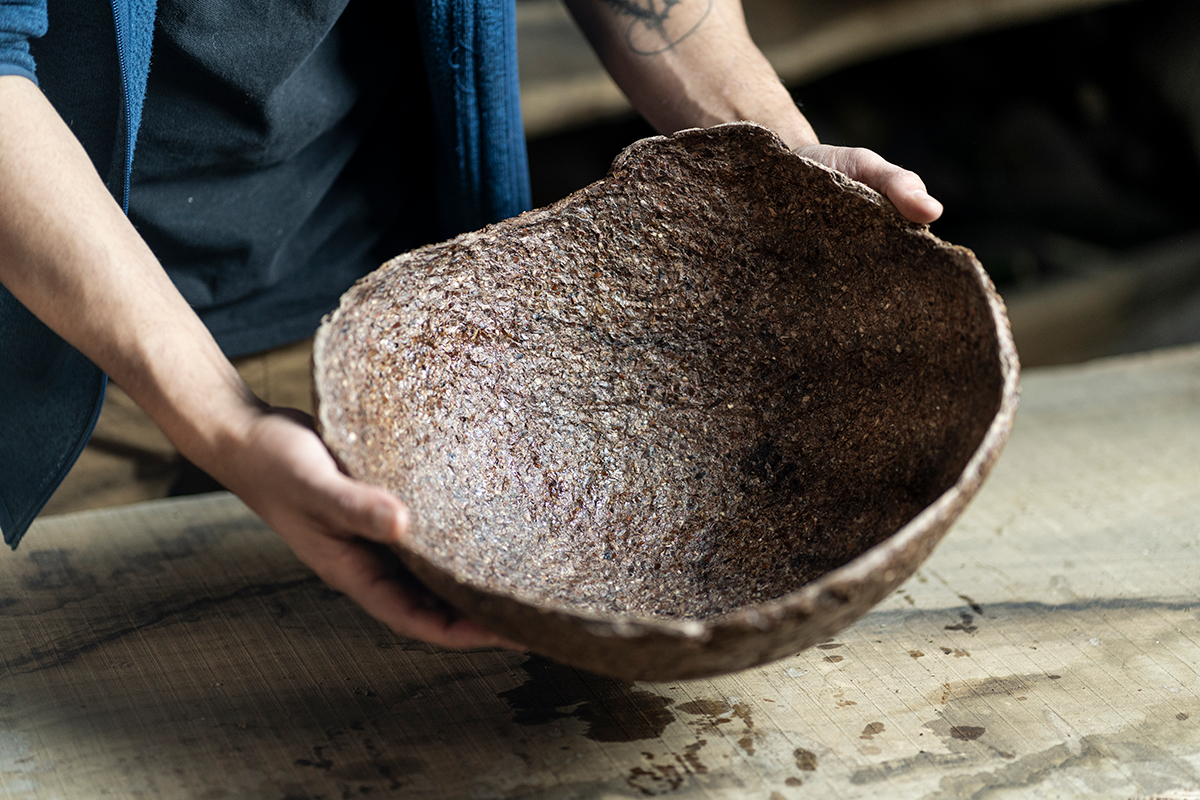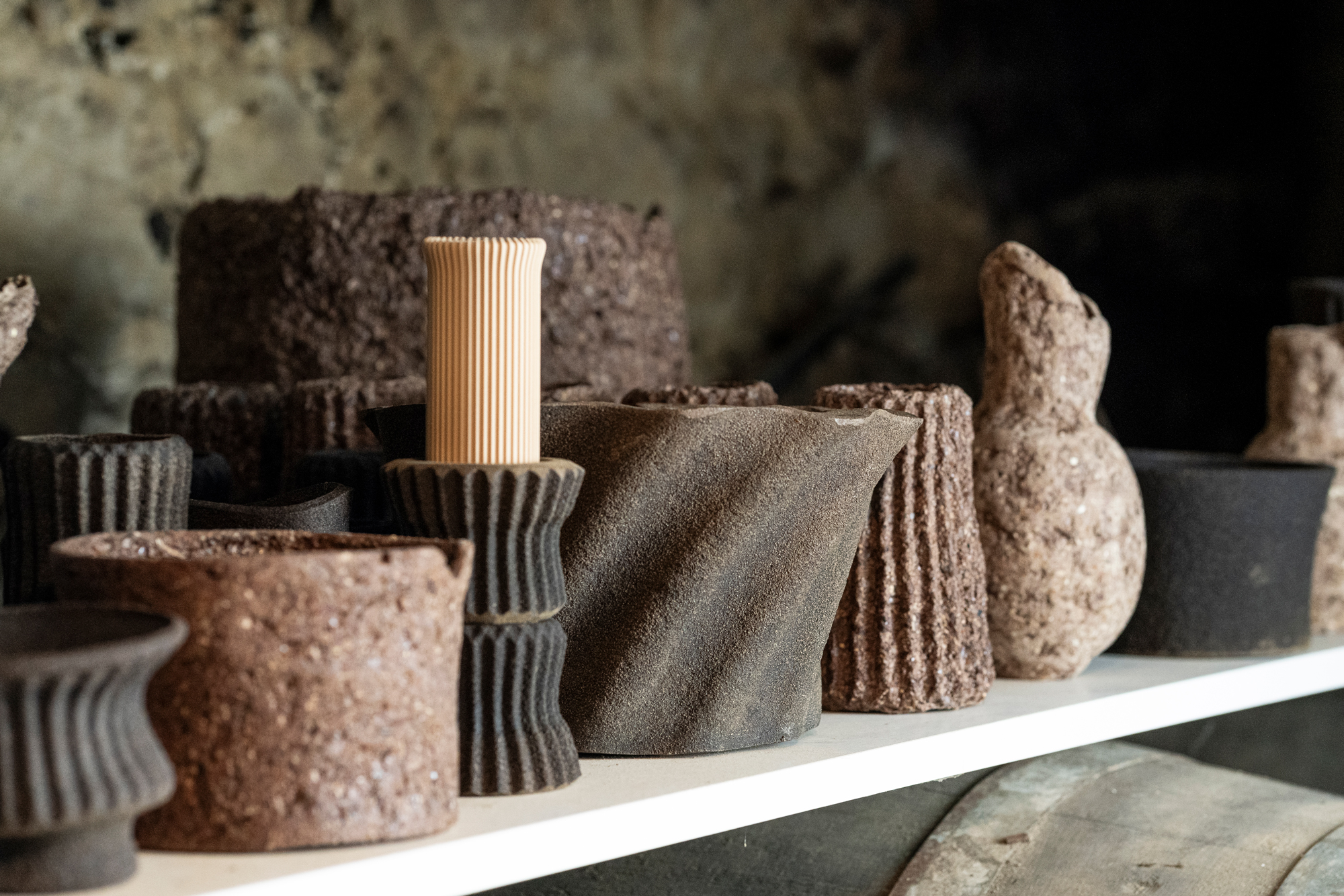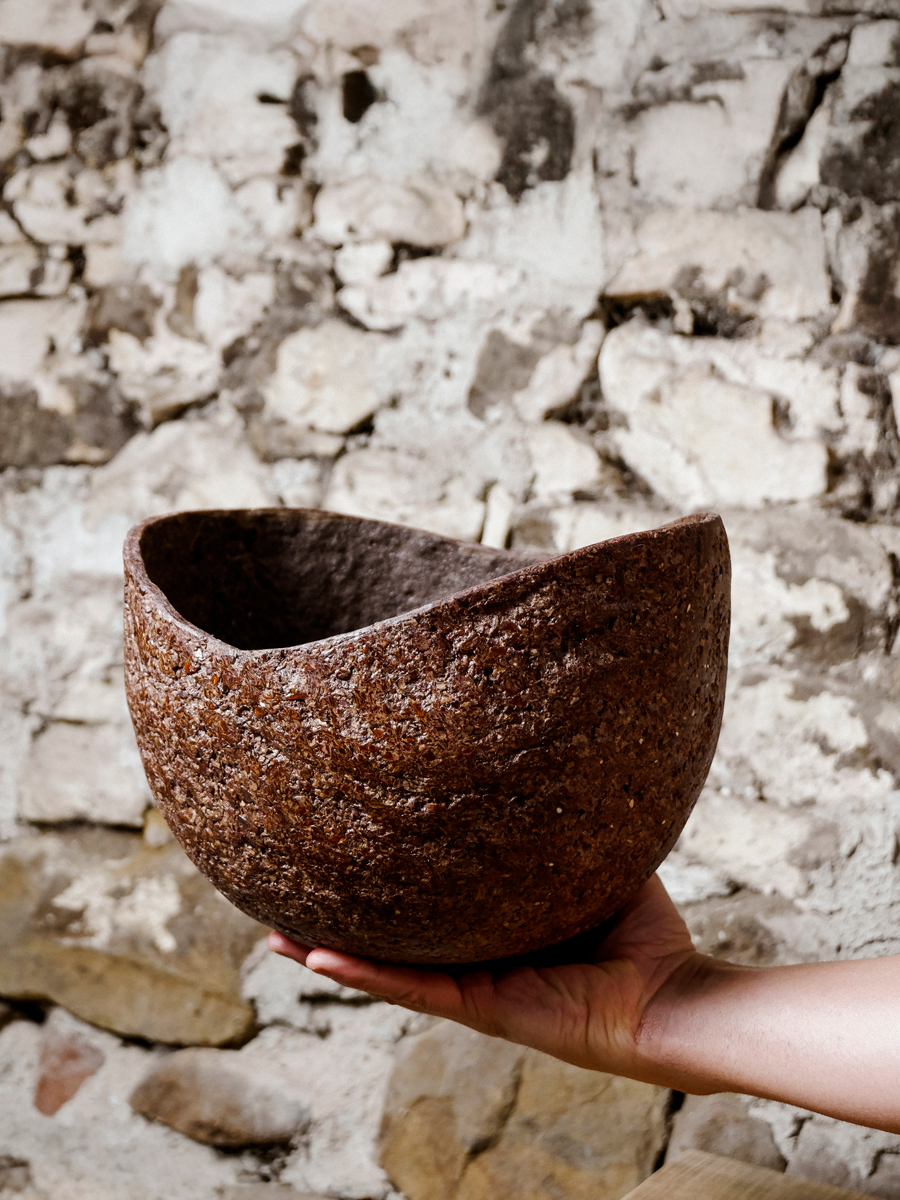Shaping a circular industrial ecosystem and supporting life-cycle thinking
ARBIO: Circular Biomaterials from Waste
ARBIO: Sustainable Biomaterials from Organic Waste for a Circular Economy
ARBIO converts organic waste into sustainable biomaterials, creating innovative, eco-friendly alternatives for industries like packaging and construction. By integrating circular economy principles and life-cycle thinking, ARBIO reduces environmental impact, promotes waste valorization, and fosters a greener future. Through biomimetic design and local partnerships, it drives sustainable transformation in industrial ecosystems.
Spain
National
It addresses urban-rural linkages
It refers to other types of transformations (soft investment)
Yes
2024-02-02
Yes
ERDF : European Regional Development Fund
No
No
As an individual
ARBIO is an innovative project that converts organic waste into high-value biomaterials, fostering a sustainable industrial ecosystem based on circular economy principles and life-cycle thinking. By upcycling agricultural and food industry residues, ARBIO develops biodegradable and recyclable alternatives for applications in packaging, construction, and product design, reducing reliance on fossil-based materials.
By integrating sustainability, inclusion, and design excellence, ARBIO exemplifies how circular thinking can transform industries, create social impact, and foster a regenerative future.
Overall Aim
The project seeks to reshape industrial production by replacing conventional, resource-intensive materials with sustainable biomaterials. ARBIO demonstrates how waste can be reintroduced into the economy, reducing pollution, lowering carbon emissions, and minimizing landfill dependency.
Target Groups
ARBIO serves multiple stakeholders:
- Industries (packaging, construction, and design) seeking sustainable materials.
- Local communities benefiting from waste valorization and job creation.
- Researchers and designers interested in biomimetic and circular innovations.
- Policymakers aiming to promote sustainable industrial transitions.
Specific Objectives.
Develop innovative biomaterials from organic waste streams.
Implement circular production models, ensuring full material reutilization.
Engage industries in adopting sustainable alternatives.
Educate communities and businesses on circular economy benefits.
Reduce environmental footprint by promoting biodegradable and low-impact solutions.
Achieved Outcomes
Creation of multiple biomaterial prototypes with industrial applications.
Collaboration with local waste producers to establish a resource-efficient ecosystem.
Reduction of CO₂ emissions and waste accumulation through circular practices.
Increased public awareness of sustainable materials and circular economy principles.
By integrating sustainability, inclusion, and design excellence, ARBIO exemplifies how circular thinking can transform industries, create social impact, and foster a regenerative future.
Overall Aim
The project seeks to reshape industrial production by replacing conventional, resource-intensive materials with sustainable biomaterials. ARBIO demonstrates how waste can be reintroduced into the economy, reducing pollution, lowering carbon emissions, and minimizing landfill dependency.
Target Groups
ARBIO serves multiple stakeholders:
- Industries (packaging, construction, and design) seeking sustainable materials.
- Local communities benefiting from waste valorization and job creation.
- Researchers and designers interested in biomimetic and circular innovations.
- Policymakers aiming to promote sustainable industrial transitions.
Specific Objectives.
Develop innovative biomaterials from organic waste streams.
Implement circular production models, ensuring full material reutilization.
Engage industries in adopting sustainable alternatives.
Educate communities and businesses on circular economy benefits.
Reduce environmental footprint by promoting biodegradable and low-impact solutions.
Achieved Outcomes
Creation of multiple biomaterial prototypes with industrial applications.
Collaboration with local waste producers to establish a resource-efficient ecosystem.
Reduction of CO₂ emissions and waste accumulation through circular practices.
Increased public awareness of sustainable materials and circular economy principles.
Circular Economy
Biomaterials
Waste Valorization
Sustainable Innovation
Life-Cycle Thinking
For ARBIO, sustainability is at the heart of our mission. Our project focuses on the development and production of biomaterials derived from organic waste, aiming to create a circular ecosystem that reduces waste and environmental impact. By using renewable and natural resources, we not only reduce the need for non-renewable raw materials but also contribute to mitigating climate change by lowering carbon emissions.
Key Objectives of Sustainability:
Circular Economy: Our biomaterials are produced using organic waste that would otherwise be discarded. This approach minimizes landfill waste and reduces the environmental footprint of traditional manufacturing processes, promoting a closed-loop system where materials are continuously reused.
Resource Efficiency: We prioritize the use of sustainable, biodegradable materials that reduce dependency on fossil fuels and toxic substances. By focusing on organic waste, we also reduce the strain on natural resources, leading to more responsible consumption patterns.
Carbon Footprint Reduction: Our production methods utilize renewable energy sources, and our biomaterials are designed to be fully compostable or recyclable, ensuring that they have a minimal impact on the environment at the end of their lifecycle.
Social and Environmental Impact: We collaborate with local communities and stakeholders to ensure the responsible sourcing of materials and promote education around sustainability. This also includes fostering a deeper connection to the environment and raising awareness about the importance of reducing waste.
Exemplary Aspects:
Innovation: ARBIO’s approach exemplifies innovative solutions in the biomaterials industry, demonstrating how we can leverage waste to create valuable, sustainable products.
Holistic Impact: Our focus on both environmental and social dimensions, such as collaboration with local suppliers and educational outreach, positions our project as a model for other industries.
Key Objectives of Sustainability:
Circular Economy: Our biomaterials are produced using organic waste that would otherwise be discarded. This approach minimizes landfill waste and reduces the environmental footprint of traditional manufacturing processes, promoting a closed-loop system where materials are continuously reused.
Resource Efficiency: We prioritize the use of sustainable, biodegradable materials that reduce dependency on fossil fuels and toxic substances. By focusing on organic waste, we also reduce the strain on natural resources, leading to more responsible consumption patterns.
Carbon Footprint Reduction: Our production methods utilize renewable energy sources, and our biomaterials are designed to be fully compostable or recyclable, ensuring that they have a minimal impact on the environment at the end of their lifecycle.
Social and Environmental Impact: We collaborate with local communities and stakeholders to ensure the responsible sourcing of materials and promote education around sustainability. This also includes fostering a deeper connection to the environment and raising awareness about the importance of reducing waste.
Exemplary Aspects:
Innovation: ARBIO’s approach exemplifies innovative solutions in the biomaterials industry, demonstrating how we can leverage waste to create valuable, sustainable products.
Holistic Impact: Our focus on both environmental and social dimensions, such as collaboration with local suppliers and educational outreach, positions our project as a model for other industries.
redefines material aesthetics by merging biomimicry, craftsmanship, and sustainability into a new design language. Our biomaterials, developed from organic waste, embody a unique visual and tactile experience that connects people to nature. The project not only enhances the aesthetic value of materials but also fosters a deeper cultural appreciation for sustainability, circular design, and biofabrication.
Key Aesthetic and Cultural Objectives:
Natural Aesthetic Identity – Inspired by organic textures, ARBIO’s biomaterials exhibit a raw, natural beauty that evolves over time. Each piece embraces imperfection, creating a unique material expression that reflects the living systems from which it originates.
Sensory Engagement – The materials developed by ARBIO offer a multi-sensory experience. Their textures, scents, and tactile qualities evoke an organic connection, enhancing user engagement with objects and spaces.
Cultural Storytelling – By integrating traditional craftsmanship with new biofabrication techniques, ARBIO bridges heritage and innovation. The project revitalizes ancestral knowledge while embedding sustainable narratives in contemporary design.
Sustainability as an Artistic Element – ARBIO transforms the constraints of biodegradable materials into aesthetic opportunities. The ephemeral quality of its materials challenges conventional design norms, embracing the beauty of decay, transformation, and regeneration.
Versatility in Application – The biomaterials are designed to be adaptable across different creative fields, from art and fashion to furniture and architecture, demonstrating how sustainable materials can redefine modern aesthetics.
Exemplary Impact:
ARBIO sets a new benchmark for sustainable aesthetics by proving that biomaterials can be both visually compelling and environmentally responsible. The project reimagines materiality, not just as a functional component, but as an artistic and cultural medium that enhances the user experience.
Key Aesthetic and Cultural Objectives:
Natural Aesthetic Identity – Inspired by organic textures, ARBIO’s biomaterials exhibit a raw, natural beauty that evolves over time. Each piece embraces imperfection, creating a unique material expression that reflects the living systems from which it originates.
Sensory Engagement – The materials developed by ARBIO offer a multi-sensory experience. Their textures, scents, and tactile qualities evoke an organic connection, enhancing user engagement with objects and spaces.
Cultural Storytelling – By integrating traditional craftsmanship with new biofabrication techniques, ARBIO bridges heritage and innovation. The project revitalizes ancestral knowledge while embedding sustainable narratives in contemporary design.
Sustainability as an Artistic Element – ARBIO transforms the constraints of biodegradable materials into aesthetic opportunities. The ephemeral quality of its materials challenges conventional design norms, embracing the beauty of decay, transformation, and regeneration.
Versatility in Application – The biomaterials are designed to be adaptable across different creative fields, from art and fashion to furniture and architecture, demonstrating how sustainable materials can redefine modern aesthetics.
Exemplary Impact:
ARBIO sets a new benchmark for sustainable aesthetics by proving that biomaterials can be both visually compelling and environmentally responsible. The project reimagines materiality, not just as a functional component, but as an artistic and cultural medium that enhances the user experience.
ARBIO promotes inclusion by developing biomaterials that are accessible, sustainable, and adaptable across different creative and industrial fields. The project focuses on material innovation while ensuring that its processes and outcomes are open, affordable, and beneficial to a wide range of people. Through its circular production model, ARBIO transforms organic waste into high-value materials, making sustainability an accessible reality rather than an exclusive option.
Key Inclusion Objectives:
Accessibility & Affordability – ARBIO’s biomaterials are developed from organic waste, making them a cost-effective alternative to conventional materials. By using local resources, ARBIO reduces production costs and increases the affordability of sustainable materials.
Open Knowledge & Education – The project is deeply committed to knowledge-sharing through workshops, talks, and research dissemination. By opening its processes to designers, artists, and students, ARBIO fosters an inclusive community of material innovation.
Design for All – ARBIO creates materials that can be used in diverse applications, from art and design to fashion and architecture. The project ensures its biomaterials are non-toxic, biodegradable, and adaptable, aligning with inclusive design principles.
Community & Social Impact – ARBIO works with local artisans and communities, integrating traditional crafts with new biofabrication techniques. This approach preserves cultural heritage while introducing sustainable practices, benefiting both rural and urban economies.
Sustainability & Circular Economy – The project promotes a regenerative economy by creating materials that can be reintegrated into natural cycles, reducing waste, and making sustainability achievable for a broader audience.
Exemplary Impact:
ARBIO serves as a model for inclusive material innovation, demonstrating that sustainable design can be open, scalable, and community-driven.
Key Inclusion Objectives:
Accessibility & Affordability – ARBIO’s biomaterials are developed from organic waste, making them a cost-effective alternative to conventional materials. By using local resources, ARBIO reduces production costs and increases the affordability of sustainable materials.
Open Knowledge & Education – The project is deeply committed to knowledge-sharing through workshops, talks, and research dissemination. By opening its processes to designers, artists, and students, ARBIO fosters an inclusive community of material innovation.
Design for All – ARBIO creates materials that can be used in diverse applications, from art and design to fashion and architecture. The project ensures its biomaterials are non-toxic, biodegradable, and adaptable, aligning with inclusive design principles.
Community & Social Impact – ARBIO works with local artisans and communities, integrating traditional crafts with new biofabrication techniques. This approach preserves cultural heritage while introducing sustainable practices, benefiting both rural and urban economies.
Sustainability & Circular Economy – The project promotes a regenerative economy by creating materials that can be reintegrated into natural cycles, reducing waste, and making sustainability achievable for a broader audience.
Exemplary Impact:
ARBIO serves as a model for inclusive material innovation, demonstrating that sustainable design can be open, scalable, and community-driven.
ARBIO embodies the three core principles of the New European Bauhaus—sustainability, aesthetics, and inclusion—by fostering a circular design approach that integrates local communities, artisans, and designers in the co-creation of innovative biomaterials. The project demonstrates how sustainability can be aesthetically engaging while ensuring accessibility and participation for civil society.
Citizen Involvement and Impact on the Project
Community-Driven Material Development
ARBIO collaborates with local farmers, food producers, and forestry workers to source organic waste materials, transforming them into valuable biomaterials. This circular model not only reduces waste but also creates economic opportunities for communities in rural areas.
By involving these stakeholders in material experimentation and refinement, ARBIO ensures that the project aligns with local knowledge and environmental needs.
Participatory Design and Open Knowledge Sharing
Workshops and educational programs engage designers, artists, and students in the research and development of sustainable materials. These sessions encourage hands-on experimentation, empowering participants to understand the potential of biomaterials in various disciplines.
By fostering an open-source approach, ARBIO allows creators and institutions to access research findings, ensuring widespread adoption of sustainable practices in design and craftsmanship.
Artisans and Makers as Active Contributors
The project actively involves artisans who integrate traditional craftsmanship with contemporary biomaterial techniques. This co-creation process helps preserve cultural heritage while innovating with new, eco-friendly materials.
By training artisans in working with biomaterials, ARBIO provides them with sustainable alternatives to traditional materials, promoting environmental responsibility in creative industries.
Impact on Civil Society and Sustainability Awareness
Citizen Involvement and Impact on the Project
Community-Driven Material Development
ARBIO collaborates with local farmers, food producers, and forestry workers to source organic waste materials, transforming them into valuable biomaterials. This circular model not only reduces waste but also creates economic opportunities for communities in rural areas.
By involving these stakeholders in material experimentation and refinement, ARBIO ensures that the project aligns with local knowledge and environmental needs.
Participatory Design and Open Knowledge Sharing
Workshops and educational programs engage designers, artists, and students in the research and development of sustainable materials. These sessions encourage hands-on experimentation, empowering participants to understand the potential of biomaterials in various disciplines.
By fostering an open-source approach, ARBIO allows creators and institutions to access research findings, ensuring widespread adoption of sustainable practices in design and craftsmanship.
Artisans and Makers as Active Contributors
The project actively involves artisans who integrate traditional craftsmanship with contemporary biomaterial techniques. This co-creation process helps preserve cultural heritage while innovating with new, eco-friendly materials.
By training artisans in working with biomaterials, ARBIO provides them with sustainable alternatives to traditional materials, promoting environmental responsibility in creative industries.
Impact on Civil Society and Sustainability Awareness
ARBIO engages stakeholders at multiple levels—local, regional, national, and European—to foster sustainability, innovation, and circular design. Each level plays a crucial role in shaping the project’s success.
At the local level, ARBIO collaborates with farmers, food producers, and forestry workers, who provide organic waste materials for biomaterial production. Local artisans and craftspeople integrate traditional techniques with biofabrication, while students and schools participate in workshops on biomaterials and sustainability. This engagement strengthens rural economies, preserves craft heritage, and educates future generations.
At the regional level, ARBIO partners with universities and research centers, such as the University of Oviedo, ensuring scientific validation of its materials. Regional government programs, including Gijón IMPULSA, provide funding and support, while collaborations with local sustainability initiatives promote circular economy principles. These connections facilitate technological advancements, funding opportunities, and regional identity-building through bio-based materials.
At the national level, ARBIO participates in initiatives like Circular Weekend by Enviroo, Ecoembes, and Fundación Biodiversidad, promoting biomaterials in broader sustainability discussions. Winning the Ances Open Innovation award validated its impact at a national scale, while partnerships with Spanish craft and design networks have introduced biomaterials into furniture, fashion, and product design. These engagements strengthen ARBIO’s role as an innovator in circular design and policy discussions.
At the European level, ARBIO aligns with the New European Bauhaus, contributing to the dialogue on sustainable, inclusive design. Participation in EU-funded research programs expands knowledge on biofabrication, while exhibitions at European design festivals increase visibility.
At the local level, ARBIO collaborates with farmers, food producers, and forestry workers, who provide organic waste materials for biomaterial production. Local artisans and craftspeople integrate traditional techniques with biofabrication, while students and schools participate in workshops on biomaterials and sustainability. This engagement strengthens rural economies, preserves craft heritage, and educates future generations.
At the regional level, ARBIO partners with universities and research centers, such as the University of Oviedo, ensuring scientific validation of its materials. Regional government programs, including Gijón IMPULSA, provide funding and support, while collaborations with local sustainability initiatives promote circular economy principles. These connections facilitate technological advancements, funding opportunities, and regional identity-building through bio-based materials.
At the national level, ARBIO participates in initiatives like Circular Weekend by Enviroo, Ecoembes, and Fundación Biodiversidad, promoting biomaterials in broader sustainability discussions. Winning the Ances Open Innovation award validated its impact at a national scale, while partnerships with Spanish craft and design networks have introduced biomaterials into furniture, fashion, and product design. These engagements strengthen ARBIO’s role as an innovator in circular design and policy discussions.
At the European level, ARBIO aligns with the New European Bauhaus, contributing to the dialogue on sustainable, inclusive design. Participation in EU-funded research programs expands knowledge on biofabrication, while exhibitions at European design festivals increase visibility.
ARBIO integrates multiple disciplines and knowledge fields, fostering a transdisciplinary approach to sustainable design and biomaterial innovation. The project brings together design, biology, material science, traditional craftsmanship, engineering, and environmental sciences, creating a dynamic ecosystem of collaboration.
Design and Biomaterials Research
Designers and material scientists work together to develop bio-based alternatives to conventional materials, ensuring that aesthetics, functionality, and sustainability align. The research process involves biomimicry principles, drawing inspiration from nature to create regenerative materials. The interaction between biodesigners and scientists ensures that the materials are not only innovative but also scalable and durable.
Biology and Circular Economy
Microbiologists and environmental scientists study biodegradation processes, mycelium growth, and natural polymers to optimize the production of bio-based materials. These experts collaborate with sustainability consultants to ensure ARBIO’s closed-loop production model, minimizing waste and emissions while maximizing efficiency.
Traditional Craft and Digital Fabrication
Craftspeople and artisans bring expertise in textile making, basketry, and natural dyeing, integrating ancestral techniques into the contemporary biomaterial design. Simultaneously, engineers specializing in digital fabrication contribute knowledge in 3D printing, CNC milling, and robotic manufacturing, allowing for precise and scalable production methods. This dialogue between tradition and technology enhances material innovation while preserving cultural heritage.
Engineering and Sustainable Architecture
Architects and engineers collaborate to explore structural applications of biomaterials, testing their viability for use in interior design, furniture, and construction. The knowledge exchange between material engineers, structural designers, and sustainable architects.
Design and Biomaterials Research
Designers and material scientists work together to develop bio-based alternatives to conventional materials, ensuring that aesthetics, functionality, and sustainability align. The research process involves biomimicry principles, drawing inspiration from nature to create regenerative materials. The interaction between biodesigners and scientists ensures that the materials are not only innovative but also scalable and durable.
Biology and Circular Economy
Microbiologists and environmental scientists study biodegradation processes, mycelium growth, and natural polymers to optimize the production of bio-based materials. These experts collaborate with sustainability consultants to ensure ARBIO’s closed-loop production model, minimizing waste and emissions while maximizing efficiency.
Traditional Craft and Digital Fabrication
Craftspeople and artisans bring expertise in textile making, basketry, and natural dyeing, integrating ancestral techniques into the contemporary biomaterial design. Simultaneously, engineers specializing in digital fabrication contribute knowledge in 3D printing, CNC milling, and robotic manufacturing, allowing for precise and scalable production methods. This dialogue between tradition and technology enhances material innovation while preserving cultural heritage.
Engineering and Sustainable Architecture
Architects and engineers collaborate to explore structural applications of biomaterials, testing their viability for use in interior design, furniture, and construction. The knowledge exchange between material engineers, structural designers, and sustainable architects.
ARBIO represents a shift from conventional, extractive industrial practices to nature-based, regenerative material innovation. Unlike mainstream manufacturing, which relies on synthetic, petroleum-based materials, ARBIO develops biomaterials from organic waste, fungi, and natural polymers, creating fully circular and biodegradable alternatives.
1. Biomaterials from Waste
While traditional industries generate waste, ARBIO transforms agricultural by-products, mycelium, and plant fibers into functional, aesthetic, and durable materials, reducing reliance on virgin resources and lowering carbon emissions.
2. Craft Meets Digital Fabrication
Mainstream production separates traditional techniques from technology. ARBIO integrates basketry, natural dyeing, and molding with 3D printing, CNC milling, and robotic assembly, combining artisanal authenticity with precision and scalability.
3. Biomimetic and Living Materials
Unlike synthetic materials, ARBIO’s approach is biomimetic, inspired by natural growth patterns. Some materials self-assemble and self-repair, like mycelium composites, making them radically different from industrial materials.
4. Circular Production Model
Conventional materials follow a linear "take-make-dispose" model, creating pollution. ARBIO operates within a closed-loop system, where materials decompose naturally, proving that waste-free, regenerative production is achievable.
5. Multidisciplinary and Open-Source Collaboration
While industries work in silos, ARBIO fosters collaboration between designers, scientists, engineers, and artisans, sharing knowledge to accelerate biomaterial adoption in art, design, and architecture.
A Disruptive Model for the Future
Mainstream practices remain resource-intensive, but ARBIO proves bio-based materials can be high-performing and visually compelling. By pioneering regenerative material development, ARBIO sets a new standard for sustainable industries.
1. Biomaterials from Waste
While traditional industries generate waste, ARBIO transforms agricultural by-products, mycelium, and plant fibers into functional, aesthetic, and durable materials, reducing reliance on virgin resources and lowering carbon emissions.
2. Craft Meets Digital Fabrication
Mainstream production separates traditional techniques from technology. ARBIO integrates basketry, natural dyeing, and molding with 3D printing, CNC milling, and robotic assembly, combining artisanal authenticity with precision and scalability.
3. Biomimetic and Living Materials
Unlike synthetic materials, ARBIO’s approach is biomimetic, inspired by natural growth patterns. Some materials self-assemble and self-repair, like mycelium composites, making them radically different from industrial materials.
4. Circular Production Model
Conventional materials follow a linear "take-make-dispose" model, creating pollution. ARBIO operates within a closed-loop system, where materials decompose naturally, proving that waste-free, regenerative production is achievable.
5. Multidisciplinary and Open-Source Collaboration
While industries work in silos, ARBIO fosters collaboration between designers, scientists, engineers, and artisans, sharing knowledge to accelerate biomaterial adoption in art, design, and architecture.
A Disruptive Model for the Future
Mainstream practices remain resource-intensive, but ARBIO proves bio-based materials can be high-performing and visually compelling. By pioneering regenerative material development, ARBIO sets a new standard for sustainable industries.
Our biomimetic methodology is inspired by the processes found in nature, focusing on producing materials that align with natural cycles and are compatible with life. We study biological processes and ecosystems to understand how nature creates sustainable, efficient, and resilient materials, then replicate these methods in our production processes.
Our approach involves the following key steps:
Observation of Nature's Designs: We analyze natural structures and processes such as how trees grow, how shells form, and how fungi create networks. These observations guide the design of our materials, ensuring they are both functional and harmonious with the environment.
Material Sourcing: We use organic waste and renewable resources as raw materials. This aligns with the circular economy by reducing the extraction of new resources and minimizing waste.
Replicating Natural Processes: We mimic the way nature forms materials through processes such as fermentation, growth, and crystallization. These natural processes allow us to produce materials that are not only environmentally friendly but also efficient in terms of energy use.
Life-cycle Thinking: We ensure that the materials we create are fully biodegradable or recyclable at the end of their life cycle. This approach guarantees that they leave a minimal ecological footprint, mirroring the cyclical nature of life itself.
By integrating these principles into our production, we achieve materials that are both innovative and sustainable, contributing to a future where industry and nature coexist in harmony.
Our approach involves the following key steps:
Observation of Nature's Designs: We analyze natural structures and processes such as how trees grow, how shells form, and how fungi create networks. These observations guide the design of our materials, ensuring they are both functional and harmonious with the environment.
Material Sourcing: We use organic waste and renewable resources as raw materials. This aligns with the circular economy by reducing the extraction of new resources and minimizing waste.
Replicating Natural Processes: We mimic the way nature forms materials through processes such as fermentation, growth, and crystallization. These natural processes allow us to produce materials that are not only environmentally friendly but also efficient in terms of energy use.
Life-cycle Thinking: We ensure that the materials we create are fully biodegradable or recyclable at the end of their life cycle. This approach guarantees that they leave a minimal ecological footprint, mirroring the cyclical nature of life itself.
By integrating these principles into our production, we achieve materials that are both innovative and sustainable, contributing to a future where industry and nature coexist in harmony.
Biomimetic Methodology: The principles of biomimicry, particularly in material design, can be applied universally. By studying natural processes and ecosystems, communities worldwide can develop their own sustainable, bio-inspired materials using locally available resources. The methodology is flexible and can be adapted to various geographical, cultural, and economic contexts.
Sustainable Production Processes: Our use of organic waste and renewable resources as raw materials can be replicated in diverse regions. Local communities can collect and process organic waste into valuable materials, promoting a circular economy and reducing waste. This process could be implemented in urban, rural, or agricultural settings.
Low-Cost Technologies: The technologies we use, such as fermentation and growth processes for material production, can be scaled to various levels. These technologies are often low-cost and do not require advanced infrastructure, making them accessible to communities with limited resources.
Circular Economy Model: Our approach to creating materials that are fully biodegradable or recyclable can be implemented globally, fostering sustainable production and consumption. This model can be replicated by businesses or cooperatives interested in reducing their environmental impact and embracing circular economy principles.
Educational and Knowledge Transfer: The knowledge and practices developed throughout our project can be shared with other organizations, institutions, and communities. Workshops, training programs, and educational initiatives can be created to teach others how to implement biomimetic principles, fostering broader adoption of sustainable practices.
Collaboration with Local Ecosystems: By tailoring our processes to integrate with local ecosystems, our approach can be customized to meet the unique needs of different environments. This aspect enables communities to create locally sourced, context-specific solutions.
Sustainable Production Processes: Our use of organic waste and renewable resources as raw materials can be replicated in diverse regions. Local communities can collect and process organic waste into valuable materials, promoting a circular economy and reducing waste. This process could be implemented in urban, rural, or agricultural settings.
Low-Cost Technologies: The technologies we use, such as fermentation and growth processes for material production, can be scaled to various levels. These technologies are often low-cost and do not require advanced infrastructure, making them accessible to communities with limited resources.
Circular Economy Model: Our approach to creating materials that are fully biodegradable or recyclable can be implemented globally, fostering sustainable production and consumption. This model can be replicated by businesses or cooperatives interested in reducing their environmental impact and embracing circular economy principles.
Educational and Knowledge Transfer: The knowledge and practices developed throughout our project can be shared with other organizations, institutions, and communities. Workshops, training programs, and educational initiatives can be created to teach others how to implement biomimetic principles, fostering broader adoption of sustainable practices.
Collaboration with Local Ecosystems: By tailoring our processes to integrate with local ecosystems, our approach can be customized to meet the unique needs of different environments. This aspect enables communities to create locally sourced, context-specific solutions.
Our project addresses key global challenges by providing local, sustainable solutions:
Environmental Degradation: Using biomimetic methodologies, we create materials from organic waste and renewable resources, reducing the need for new raw materials and minimizing pollution and deforestation.
Waste Management: By transforming organic waste into valuable materials, we tackle global waste management issues, reduce landfill accumulation, and promote recycling. This encourages a circular economy, creating economic opportunities in local communities.
Climate Change: Our sustainable material production, with minimal energy consumption and low carbon emissions, contributes to global climate change mitigation. Biodegradable and recyclable materials also prevent long-term pollution.
Resource Scarcity: By sourcing materials locally and sustainably, we reduce dependence on non-renewable resources, helping communities become more self-sufficient and resilient, particularly in resource-limited regions.
Economic Inequality: The project fosters local innovation, creating employment and supporting local economies through sustainable practices. Knowledge transfer helps underserved communities adopt these solutions, reducing economic inequality.
Biodiversity Loss: Our biomimetic approach promotes ecosystem health by designing materials that align with natural processes, supporting biodiversity conservation and sustainable land management.
In essence, our project addresses environmental, economic, and social challenges with locally-driven solutions that have global impact, creating a more sustainable and equitable future.
Environmental Degradation: Using biomimetic methodologies, we create materials from organic waste and renewable resources, reducing the need for new raw materials and minimizing pollution and deforestation.
Waste Management: By transforming organic waste into valuable materials, we tackle global waste management issues, reduce landfill accumulation, and promote recycling. This encourages a circular economy, creating economic opportunities in local communities.
Climate Change: Our sustainable material production, with minimal energy consumption and low carbon emissions, contributes to global climate change mitigation. Biodegradable and recyclable materials also prevent long-term pollution.
Resource Scarcity: By sourcing materials locally and sustainably, we reduce dependence on non-renewable resources, helping communities become more self-sufficient and resilient, particularly in resource-limited regions.
Economic Inequality: The project fosters local innovation, creating employment and supporting local economies through sustainable practices. Knowledge transfer helps underserved communities adopt these solutions, reducing economic inequality.
Biodiversity Loss: Our biomimetic approach promotes ecosystem health by designing materials that align with natural processes, supporting biodiversity conservation and sustainable land management.
In essence, our project addresses environmental, economic, and social challenges with locally-driven solutions that have global impact, creating a more sustainable and equitable future.
Sustainable Material Production: We successfully developed bio-inspired materials using organic waste and renewable resources, significantly reducing environmental impact. These materials are biodegradable, recyclable, and require minimal energy for production, demonstrating the potential for sustainable manufacturing practices. This has shown measurable reductions in carbon emissions and resource consumption.
Waste Reduction: By incorporating organic waste into the production process, we have transformed potential waste into valuable products. This not only alleviates local waste management challenges but also reduces landfill dependency, contributing to a cleaner, more sustainable environment.
Economic Empowerment: The project has created local economic opportunities by promoting green jobs, especially in areas with limited access to traditional industries. Communities involved in the collection, processing, and production of biomimetic materials have gained new skills, boosting local economies. In addition, the project has contributed to the growth of circular economy models within the region.
Increased Awareness and Education: Our educational outreach has raised awareness about the potential of biomimetic design and sustainable practices. Workshops, training programs, and knowledge-sharing initiatives have empowered local communities and businesses to implement similar strategies, leading to broader adoption of circular economy principles.
Biodiversity and Ecosystem Health: The project has contributed to preserving local ecosystems by utilizing nature-inspired processes that align with the natural environment. Our materials are designed to support biodiversity, and the use of renewable resources reduces the environmental impact of material extraction.
Scalable and Replicable Model: The results of our project demonstrate the scalability and replicability of our approach. Communities in different regions have successfully adopted our methods.
Waste Reduction: By incorporating organic waste into the production process, we have transformed potential waste into valuable products. This not only alleviates local waste management challenges but also reduces landfill dependency, contributing to a cleaner, more sustainable environment.
Economic Empowerment: The project has created local economic opportunities by promoting green jobs, especially in areas with limited access to traditional industries. Communities involved in the collection, processing, and production of biomimetic materials have gained new skills, boosting local economies. In addition, the project has contributed to the growth of circular economy models within the region.
Increased Awareness and Education: Our educational outreach has raised awareness about the potential of biomimetic design and sustainable practices. Workshops, training programs, and knowledge-sharing initiatives have empowered local communities and businesses to implement similar strategies, leading to broader adoption of circular economy principles.
Biodiversity and Ecosystem Health: The project has contributed to preserving local ecosystems by utilizing nature-inspired processes that align with the natural environment. Our materials are designed to support biodiversity, and the use of renewable resources reduces the environmental impact of material extraction.
Scalable and Replicable Model: The results of our project demonstrate the scalability and replicability of our approach. Communities in different regions have successfully adopted our methods.

